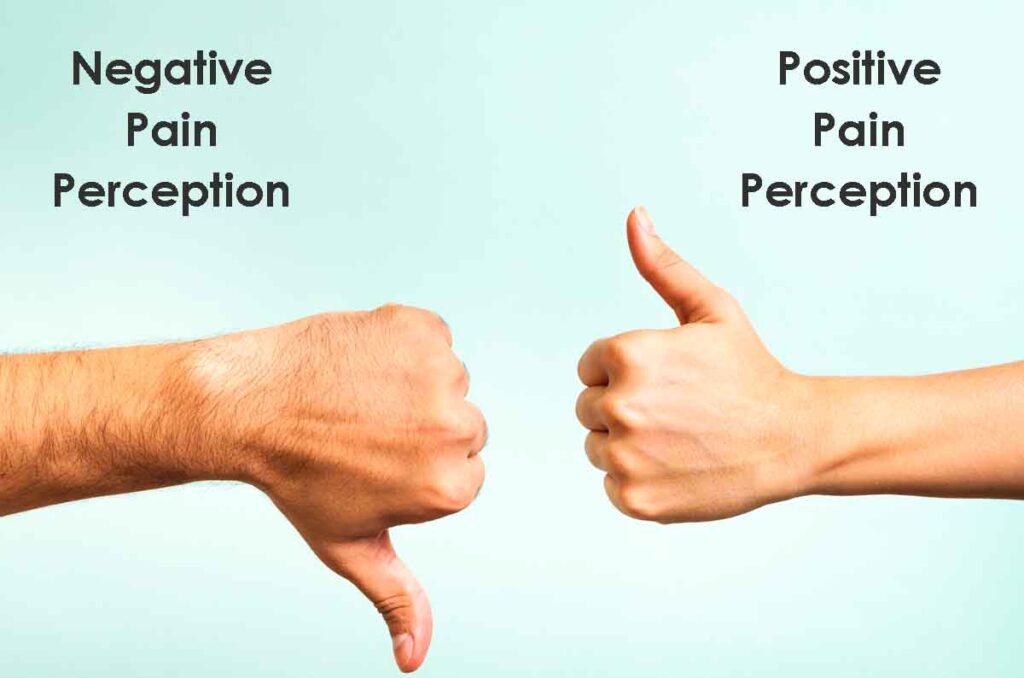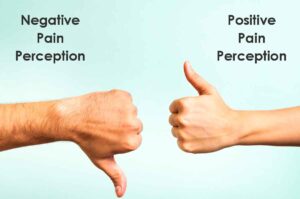Pain – What does it feel like? How this information can guide intervention

When describing your pain details can include location, type, severity/intensity, frequency, duration, triggers, and impact on life.
When describing the location of the pain it may not be accurate. Pain can be perceived in an area that is distant from the tissue source of the pain. This is described as referred pain, when the pain perception is “referred” to a different location of the body, than where the tissue damage is. The classic example of this is experiencing a problem in the heart muscle, the individual often complains of left arm pain or jaw pain. The damage is in the heart tissue. The perception of the location of the pain is in the arm.
A standardized widely accepted McGill Pain Questionnaire asks the question “What does your pain feel like”? The questionnaire lists twenty sub-groupings and seventy-eight adjectives or descriptor words. The list is not exhaustive.
I asked a patient, “Can you describe your pain.” His response was “It feels like “nig-nigings.” After much discussion and conversation with the patient and family members we interpreted that the pain he was feeling was “pins & needles down the arm.” Neither “nig-nignngs” nor “pins & needles” are words in the list of seventy-eight descriptors words of what the pain feels like that are in the McGill Pain Questionnaire.
Pain is a complex sensory and emotional experience that is felt differently for everyone. It is a very personal individualized experience. The modifiers and descriptors of the type of pain are highly variable and individualized.

Knowing the description of what the pain feels like, the type of pain has been used to infer a potential source of pain. For example, musculoskeletal pain is aching, throbbing, or tight. Neuropathic pain is shooting, burning, electric, and nervy. Inflammatory pain is hot and swollen.
However, correlating the description of what the pain feels like to a potential source of the pain is questionable. Aching pain may be a muscle overuse or injury, but it also can be an infection, hormonal imbalance, and even sadness.
However, knowing what the chief complaint pain feels like helps monitor the response to intervention.
The clinical reasoning process of symptom &/or sign modification procedure involves trying to provoke the symptom of pain. Describing what the pain feels like can provide direction to proceed with intervention or not.
A potential working hypothesis is If altering the sign of deviant movement associated with the symptom of pain, then it is important to distinguish whether the discomfort in the location of the patient’s chief complaint is a bad sensation that needs to be avoided Or whether it is a good sensation that will get better as the joint gets stronger and learns to move better.
Patient Case Example:
The following patient example demonstrates the clinical reasoning process and development of a working hypothesis.
The individual has a 7-year history of recurring left butt pain. MRI of the left hip demonstrates mild degenerative tearing of the superior anterior labrum of the hip joint (damage to hip joint ligament), mild edema, and atrophy of the left posterior Gluteus Medius muscle (hip muscle tendinopathy).
When asked “What does the pain feel like” her description is it feels like a “deep ache pressure, bone pain, and needle is stabbing in the butt.” The pain is worse with walking for more than a few minutes and standing for more than 10 minutes.
A 2D slow-motion video analysis of walking identifies mild gait deviations. See the video below.
The left foot/leg deviates more towards the mid-line of the body, compared to the right. When the left foot is on the ground the center of mass (trunk) shifts farther to the left. See the video below.
The initial working hypothesis is if she alters the gait deviation and walks with a more optimal symmetrical movement, keeping the left foot/leg out to the left, and maintaining daylight between the knees, then she can walk farther without left butt pain.
She was given visual video feedback by seeing the slow-motion video and verbal cues “Keep left foot out to left side and keep daylight between knees.” She was instructed to walk the old way the habitual deviant asymmetrical way, then walk the new way.
After alternately walking between the old habitual deviant way and the new altered way she was queried “What do you notice”?
Oh no, this is not the response that I was expecting.
"This unexpected response prompted a reconsideration of the initial hypothesis."
I am thinking she should experience less pain when walking with symmetry not more pain? My original working hypothesis is refuted.
What are alternative explanations?
One alternative explanation is walking with deviant movement on an impaired hip joint is the best way she can walk and avoid pain. Animals instinctively compensate and move in a way that avoids pain. Accepting the deviant gait is an option.
Another alternative explanation is to question what the pain in the butt feels like. This may distinguish whether the pain is a positive or negative perception.

It is unlikely that zero pain is a reasonable goal.
The new working hypothesis is to practice consciously walking the “new way.” If you feel discomfort in the left butt and it feels like “muscle fatigue, soreness, work, strain” then the weak hip will get stronger, and the pain will decrease.

She was given information about the potential side effects of walking the “new way”. Initially, expect some muscle soreness in the left butt. However, if you feel “deep ache pressure, bone pain, and like a needle is stabbing in the butt” give me a call or send an email. It will likely feel weird walking the new way. Expect it to require conscious attention to walk with symmetry. Given more time to practice walking the new way expect that the conscious alteration of gait will become automatic.

In addition to conscious alteration of gait to walk with symmetry, the intervention includes strengthening exercise, avoidance of adverse repetitive postures and positions, and use of compression shorts or hip brace.
The patient above is a current patient. Initial results are she can stand longer and walk farther without pain. This process has resulted in successful outcomes for several cases of other individuals with gluteal tendinopathy. The process is also appropriate for shoulder pain and heel pain.
When assessing the response to the symptom and/or sign modification procedure and intervention consider:
- The location of the pain can be misleading.
- Distinguishing which description of “what the pain feels like” infers negative effects versus positive effects.
- Develop a working hypothesis to test whether the description of what the pain feels like is negative or positive.
- Work with your healthcare professional to test the hypothesis.
A on-demand video webinar exploring this topic and other topics is available at Plus by Physiopedia entitled “Techniques for 2D Slow-Motion Video Data Motion Analysis”.

Use this code – “Damien30” for a 30% discount to access this webinar as well as the more than 500 continuing education webinar courses available at Plus by Physiopedia. This is the link http://bit.ly/DAMIEN30 with the 30% discount code embedded.
The information on this website is not intended or implied to be a substitute for professional medical advice, diagnosis, or treatment. You are encouraged to perform additional research regarding any information contained available through this website with other sources and consult with your physician.
Damien Howell Physical Therapy – 804-647-9499 – Fax: 866-879-8591 At-Home, At Office, At Fitness Facility – I come to you, I do home visits Damien@damienhowellpt.com
